English Electric Canberra - Survivor WD935
B.2 WD935 - South Yorkshire Aircraft Museum, AeroVenture, Doncaster, Yorkshire
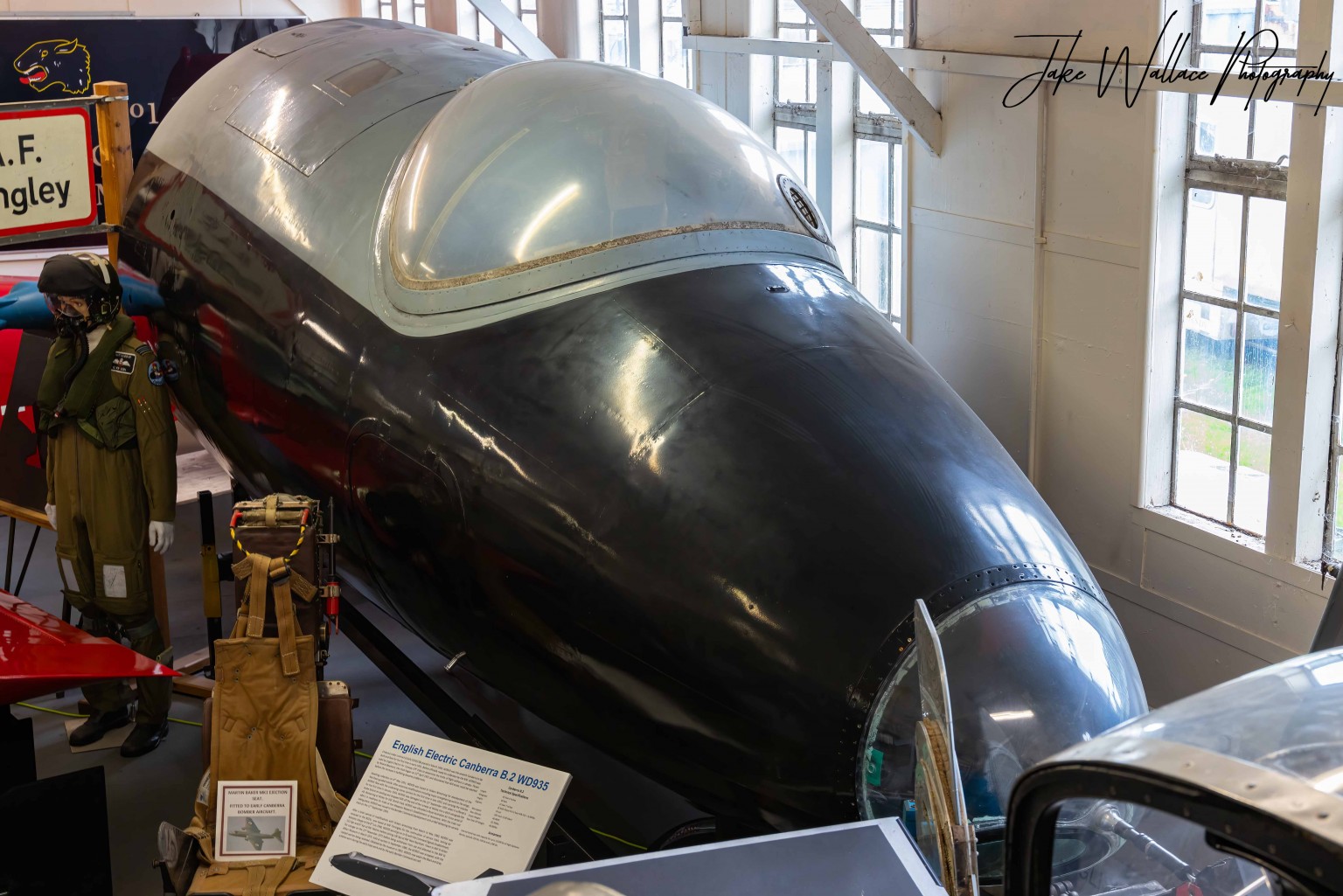 |
Canberra B.2 WD935 at South Yorkshire Aircraft Museum, 22nd September 2023; Jake Wallace
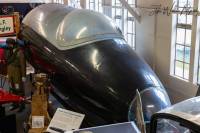
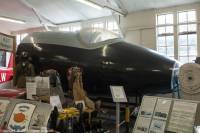
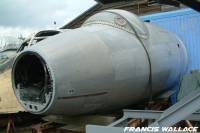
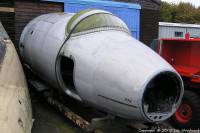
WD935 was the seventh airframe built of the first 130 B.2 aircraft contract (6/Acft/3520/CB6) placed in March 1949 - two months before the first flight of the prototype. Interestingly, an month before it was officially ready for collection, WD935 was used by English Electric for "canopy off" flying trials. These trials began with WD935 on 12 April 1951 and were to establish the limits of flight without a canopy and only a small glass screen. Roland Beamont flew the trials and found that he could reach 400 knots IAS after which the increase in general buffeting became a problem. A second trial was conducted on 3 June 1951 but this time using B.2 WD934.
After the trials, WD935 was eventually awaiting collection on 8 May 1951 and went, under the charge of the Air Ministry's Controller (Aircraft), to Vickers Armstrong at Wisley for guided weapons trials. Modified at the works at Hurn, she was used in the Vickers Type 888 "Red Dean" guided missiles trials. WD935 first flew with underwing carriers, (fitted 14 October 1953), carrying underwing stores for the first time in January 1954. The weight of the "Red Dean" missile necessitated wing reinforcing. Vickers test pilot, Peter Marsh, had a lucky escape on 21 September 1955 when a brake failure resulted in WD935 overrunning Wisley's runway and dropping 50 feet into a ditch alongside the A3 London-Southampton road.
She stayed at Wisley after this and was used for GEC bomb trials. During this time, WD935 was one of three Canberra B.2s allocated RAAF serial numbers (it became A84-1) for intended use in missile trials with the Weapons Research Establishment at Woomera. However, this did not come about and she reverted to her original serial before being eventually transferred, on 11 September 1959, to the Bomber Command Development Unit at RAF Wittering for service trials.
After a brief return to Vickers Armstrong for modifications in March 1960, WD935 was sent to BDCU at RAF Finningley in the May of that year for continuation of service trials. On 8 July 1960, she was returned to Air Ministry charge and joined the Command Signals Establishment at Watton. The next eleven years saw WD935 in RAF service with 151Sqn, 97Sqn (both at RAF Watton), and finally 100Sqn at RAF West Raynham. She was moved to RAF St Athan for storage on 23 November 1971.
Allocated to the RAF St Athan Museum on 18 March 1975, WD935 was at one point re-painted in the colours and markings of a 10Sqn Canberra during the Suez Crisis and was displayed complete with Operation Musketeer black and white stripes. A year later in 1976 she was allotted 8440M as a Ground Instructional airframe and stayed that way until sold at auction in September 1989 to Air Support Services.
Two months later on 23 November 1989 she was scrapped but the nose section was retained at Kew. The cockpit of this interesting Canberra then came under new ownership and was moved to the South Yorkshire Aircraft Museum where she can still be seen today.
After the trials, WD935 was eventually awaiting collection on 8 May 1951 and went, under the charge of the Air Ministry's Controller (Aircraft), to Vickers Armstrong at Wisley for guided weapons trials. Modified at the works at Hurn, she was used in the Vickers Type 888 "Red Dean" guided missiles trials. WD935 first flew with underwing carriers, (fitted 14 October 1953), carrying underwing stores for the first time in January 1954. The weight of the "Red Dean" missile necessitated wing reinforcing. Vickers test pilot, Peter Marsh, had a lucky escape on 21 September 1955 when a brake failure resulted in WD935 overrunning Wisley's runway and dropping 50 feet into a ditch alongside the A3 London-Southampton road.
She stayed at Wisley after this and was used for GEC bomb trials. During this time, WD935 was one of three Canberra B.2s allocated RAAF serial numbers (it became A84-1) for intended use in missile trials with the Weapons Research Establishment at Woomera. However, this did not come about and she reverted to her original serial before being eventually transferred, on 11 September 1959, to the Bomber Command Development Unit at RAF Wittering for service trials.
After a brief return to Vickers Armstrong for modifications in March 1960, WD935 was sent to BDCU at RAF Finningley in the May of that year for continuation of service trials. On 8 July 1960, she was returned to Air Ministry charge and joined the Command Signals Establishment at Watton. The next eleven years saw WD935 in RAF service with 151Sqn, 97Sqn (both at RAF Watton), and finally 100Sqn at RAF West Raynham. She was moved to RAF St Athan for storage on 23 November 1971.
Allocated to the RAF St Athan Museum on 18 March 1975, WD935 was at one point re-painted in the colours and markings of a 10Sqn Canberra during the Suez Crisis and was displayed complete with Operation Musketeer black and white stripes. A year later in 1976 she was allotted 8440M as a Ground Instructional airframe and stayed that way until sold at auction in September 1989 to Air Support Services.
Two months later on 23 November 1989 she was scrapped but the nose section was retained at Kew. The cockpit of this interesting Canberra then came under new ownership and was moved to the South Yorkshire Aircraft Museum where she can still be seen today.
Information on this page current as of 30/10/2023, last updated by Jake |
Find other photos of WD935 on the following sites:
Air-Britain - Airliners.net - Airplane-Pictures.net - flickr.com - WorldAirPics.com - JetPhotos.net - PlanePictures.net
